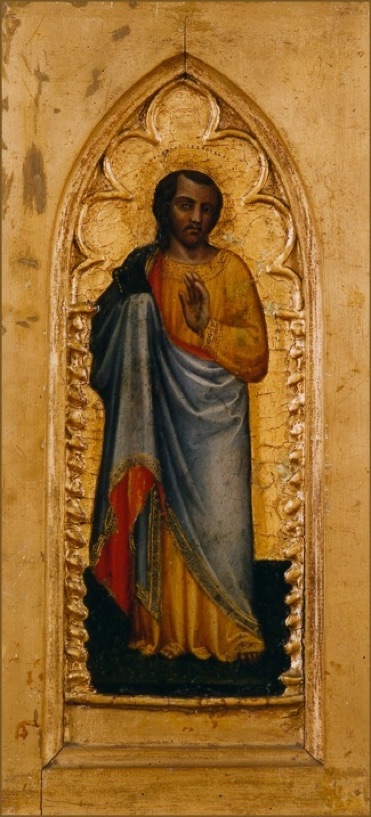The Digitalisation Project Castle Huis Bergh is the intellectual property of the Stichting Musick’s Monument. Ing Hans Meijer was responsible for the technical realisation; Dr Willem Kuiper for the scholarly input. Thanks are also due to the Anjer Cultuurfonds Gelderland; the Stichting de Verenigde Stichtingen “De Armenkorf” in Terborg and “Het Gasthuis te Silvolde”; Mrs P. Tijdink-Hermsen; Mrs L.J.C. Meijer-Kroonder; and the Giese family.




Panel
Aretino Spinello (act. 1373-1410/1) Italy, Florence
Florentine painting
Standing saint (apostle?) 1385
This panel was a part of a buttress of an altarpiece which was situated in the Monte Oliveto Maggiore monastery, to the south of Siena. From the Ramboux collection in Cologne (J. H. van Heek, last owner of the castle, who bought it in 1912 from the von Hohenzollern — Sigmaringen family) bought other items from this collection. Decided that a foundation should be set up, was set up on paper in 1946 and came into operation on his death in 1957).
Jan Herman van Heek, the last owner of Castle Bergh before it became a museum, bought among other works of art this panel from the Cologne Romboux collection. It is said to have been part of an altarpiece which was owned by the monastery of Monte Oliveto Maggiore, south of Siena in Italy. It is impossible to identify the person depicted here by Aretino Spinello. The only thing we know about him is that he is a saint, for a scarcely visible halo surrounds his head. The person portrayed has covered his right hand; to hold something manibus velatis (with covered hands) is an act of reverence, and is an indication of the preciousness or holiness of the object that is held, in this case a book. A precious or holy book: this must be a Bible. Usually the twelve apostles were depicted holding a Bible, so our yellow-robed man could be one of Jesus first followers. With his left hand, he is making a gesture that indicates he is speaking. The apostle is framed by what seems to be a window. The arches surrounding his head and body are made of stucco covered with gold leaf, a common practice in Spinellos time. The idea behind the use of stucco was to lend the panel a three-dimensional quality.

